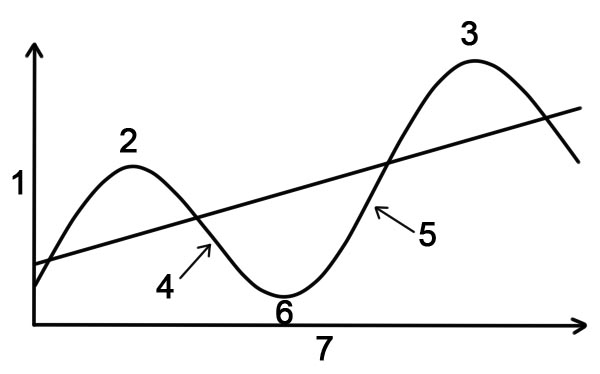Business cycle, also known as the economic cycle, refers to the ups and downs in the economy.
In this lesson, we will learn about
The business cycle is the upward and downward movement of GDP levels. It involves the shifts over time between periods of the relatively rapid growth of output (recovery and prosperity), alternating with periods of relative stagnation or decline (contraction or recession).

The business cycle has four distinct phases:
The fluctuations in the business cycle are measured in terms of the growth rate of real GDP and occur around a long-term growth trend.
The economy is said to be in a state of depression if it does not begin to expand again after a period of recession.
It is the level of real GDP that would be produced if all resources are used efficiently.
For example, if labor is used efficiently, the actual rate of unemployment will be equal to the natural rate of unemployment. When there is a positive output gap, an economy is producing beyond its long-run potential and the unemployment rate is lower than the natural rate of unemployment. During a recession, real GDP falls below its potential and the unemployment rate is higher than the natural rate of unemployment.
The actual unemployment rate is different than the natural rate of unemployment, at different points along the business cycle, because of cyclical unemployment changes along the business cycle. Cyclical unemployment increases due to reduced output during recessions, and cyclical unemployment decreases due to increased output during expansions.
The difference between actual output and potential output in the business cycle is called the output gap.
Whenever the current amount that a nation is producing is more or less than potential output, the output gap exists.
A positive output gap exists whenever the business cycle curve is above the growth trend.
When the actual output is above the potential output, it means aggregate demand has grown faster than aggregate supply. This causes the economy to overheat i.e. output is occurring at an unsustainable high level, at which the unemployment rate is lower than the natural rate of unemployment. Eventually, the business cycle will reach a peak and enter a recession.
A negative output gap exists whenever the business cycle curve is below the growth trend.
When the actual output is below the potential output, it means aggregate demand or aggregate supply have fallen, causing a fall in employment and output. The unemployment rate will be higher than the natural rate of unemployment. Eventually, the business cycle will reach a trough and enter recovery and expansion.
The business cycle is recurrent, as there are repeated episodes of contractions and expansions over time.
The business cycle also displays persistence, as declines in an economic activity tend to be followed by further declines for some time, while growth in economic activity tends to be followed by further growth for some time.
Co-movement means that many economic variables move together in a predictable way over the business cycle.
A variable that moves in the same direction as aggregate economic activity is said to be 'procyclical', while a variable that moves in the opposite direction is 'countercyclical'. For example, production, investment, average labor productivity, and the real wage are 'procyclical' variables; and the unemployment rate is 'countercyclical'.
If the peaks and troughs of a variable occur before the peaks and troughs in aggregate economic activity, it is said to be a leading variable.
If a variable’s peaks and troughs occur at the same time as the peaks and troughs in aggregate economic activity, it is said to be a coincident variable.
If a variable’s peaks and troughs come after the peaks and troughs of aggregate economic activity, it is said to be a lagging variable.